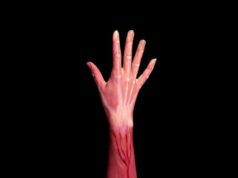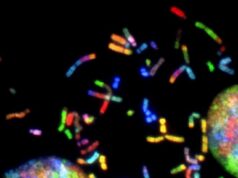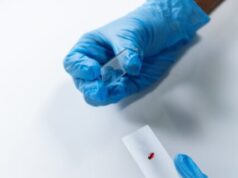The comb jelly, or ctenophore, is an ancient marine invertebrate that may be the key to understanding the transition from single-celled to multicellular animals and the evolution of tissues, Vanderbilt University researchers reported this week.
Credit: © kondratuk / Fotolia
The dawn of the Animal Kingdom began with a collagen scaffold that enabled the organization of cells into tissues.
This key innovation, which made possible the rich diversity of life on earth, is found in the most ancient of currently living animals — the ctenophore, Vanderbilt University Medical Center scientists report in the online journal eLife.
Ctenophores, commonly called comb jellies, are marine invertebrates known for their translucent, globe-like bodies that refract light into dazzling rainbow-like colors.
They have one thing in common with all animals — rope-like collagen IV molecules that assemble into scaffolds outside of the cell. These “smart” scaffolds are the fundamental architectural unit of the basement membrane, which, in turn, connects cells, provides strength to tissues and transmits information that influences how cells behave
Find your dream job in the space industry. Check our Space Job Board »
Understanding how collagen IV scaffolds bridged the transition from unicellular to multicellular animal life sheds light on diseases as diverse as kidney failure and cancer, said senior author Billy Hudson, Ph.D., the Elliott V. Newman Professor of Medicine at Vanderbilt University School of Medicine.
“The fundamental principles of tissue development are present in ancient animals,” Hudson said. “You can study them in a very simple way. It sets us up to develop a deeper understanding of tissue biology and the cause of a multitude of diseases.”
The search for the evolutionary beginning of collagen IV scaffolds began in the Hudson lab in 2009 with help from high school students and college undergraduates who participated in the AspirnautTM summer research program. The team analyzed tissues from creatures as ancient as sponges and comb jellies.
“We found that among all the collagens that make up the human body, collagen IV was the key innovation enabling single-celled organisms to evolve into multicellular animals,” said first author Aaron Fidler, a graduate student mentored by Hudson.
Fidler, who will defend his Ph.D. dissertation this summer, described collagen IV as a kind of molecular “glue” that ultimately enabled the formation of tissues and organs.
“Our findings pose questions about how collagen IV glues cells together, and how information is stored in the rope-like scaffolds to influence cell behavior,” Hudson said. “That information is the foundation for understanding defects in disease and development of new therapies.”
Story Source: Materials provided by Vanderbilt University Medical Center. Note: Content may be edited for style and length.
Journal Reference:
Aaron L Fidler Carl E Darris Sergei V Chetyrkin Vadim K Pedchenko Sergei P Boudko Kyle L Brown W Gray Jerome Julie K Hudson Antonis Rokas Billy G Hudson.Collagen IV and basement membrane at the evolutionary dawn of metazoan tissues.eLife, April 2017 DOI: 10.7554/eLife.24176.001











